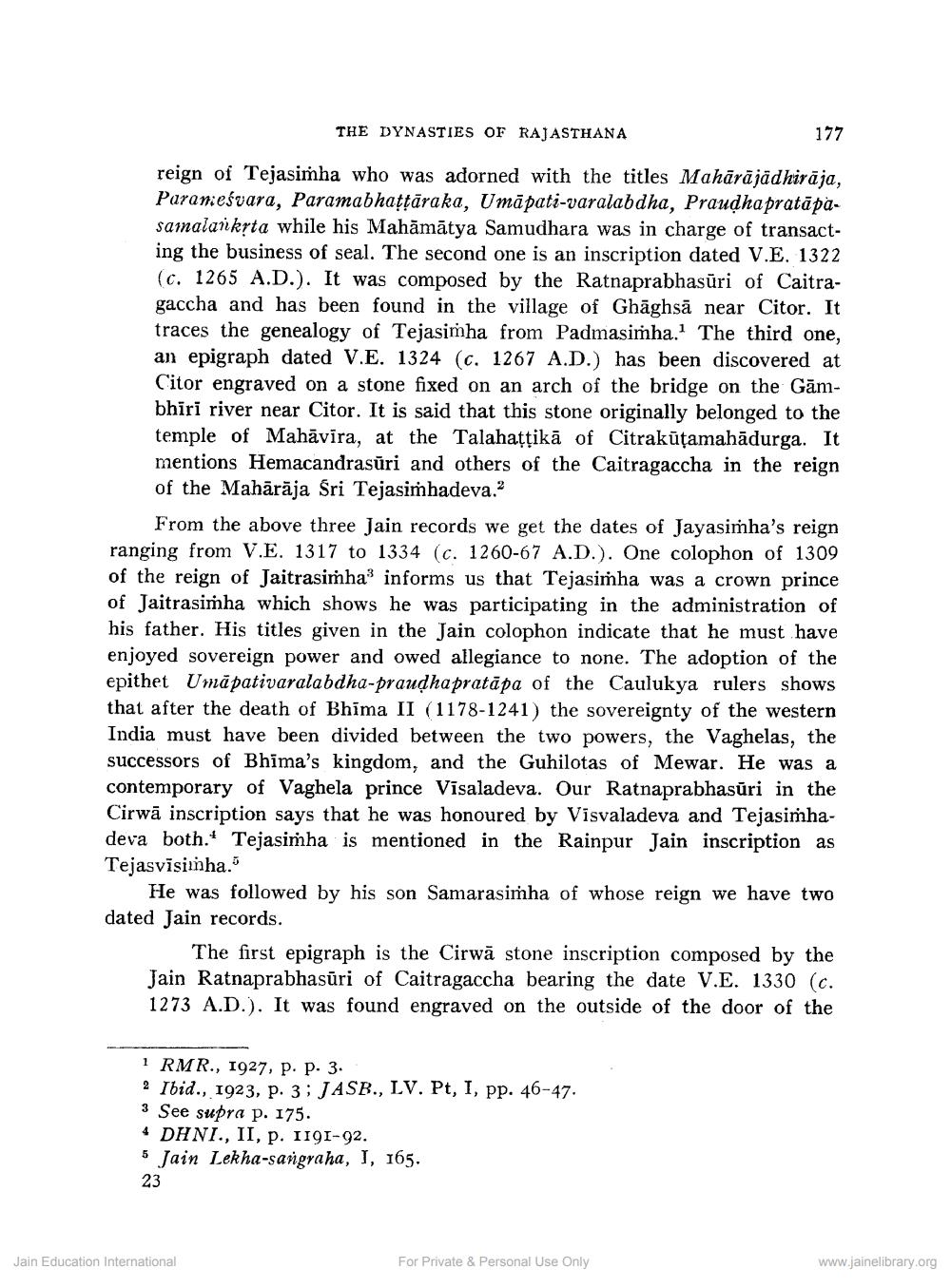________________
THE DYNASTIES OF RAJASTHANA
177
reign of Tejasimha who was adorned with the titles Mahāräjädhirāja, Paranieśvara, Paramabhattāraka, Umāpati-varalabdha, Praudhapratāpasamalarkyta while his Mahāmātya Samudhara was in charge of transacting the business of seal. The second one is an inscription dated V.E. 1322 (c. 1265 A.D.). It was composed by the Ratnaprabhasüri of Caitragaccha and has been found in the village of Ghāghsā near Citor. It traces the genealogy of Tejasimha from Padmasimha. The third one, an epigraph dated V.E. 1324 (c. 1267 A.D.) has been discovered at Citor engraved on a stone fixed on an arch of the bridge on the Gāmbhiri river near Citor. It is said that this stone originally belonged to the temple of Mahāvīra, at the Talahatţikā of Citrakūtamahādurga. It mentions Hemacandrasūri and others of the Caitragaccha in the reign of the Mahārāja Sri Tejasiṁhadeva.”
From the above three Jain records we get the dates of Jayasimha's reign ranging from V.E. 1317 to 1334 (c. 1260-67 A.D.). One colophon of 1309 of the reign of Jaitrasimha informs us that Tejasisha was a crown prince of Jaitrasimha which shows he was participating in the administration of his father. His titles given in the Jain colophon indicate that he must have enjoyed sovereign power and owed allegiance to none. The adoption of the epithet Umäpativaralabdha-praudhapratāpa of the Caulukya rulers shows that after the death of Bhima II (1178-1241) the sovereignty of the western India must have been divided between the two powers, the Vaghelas, the successors of Bhima's kingdom, and the Guhilotas of Mewar. He was a contemporary of Vaghela prince Visaladeva. Our Ratnaprabhasūri in the Cirwā inscription says that he was honoured by Visvaladeva and Tejasimhadeva both.' Tejasimha is mentioned in the Rainpur Jain inscription as Tejasvisiinha."
He was followed by his son Samarasimha of whose reign we have two dated Jain records.
The first epigraph is the Cirwā stone inscription composed by the Jain Ratnaprabhasūri of Caitragaccha bearing the date V.E. 1330 (c. 1273 A.D.). It was found engraved on the outside of the door of the
1 RMR., 1927, p. p. 3. 2 Ibid., 1923, p. 3; JASB., LV. Pt, I, pp. 46-47. 3 See supra p. 175. 4 DHNI., II, p. II91-92. 5 Jain Lekha-sangraha, I, 165.
Jain Education International
For Private & Personal Use Only
www.jainelibrary.org




